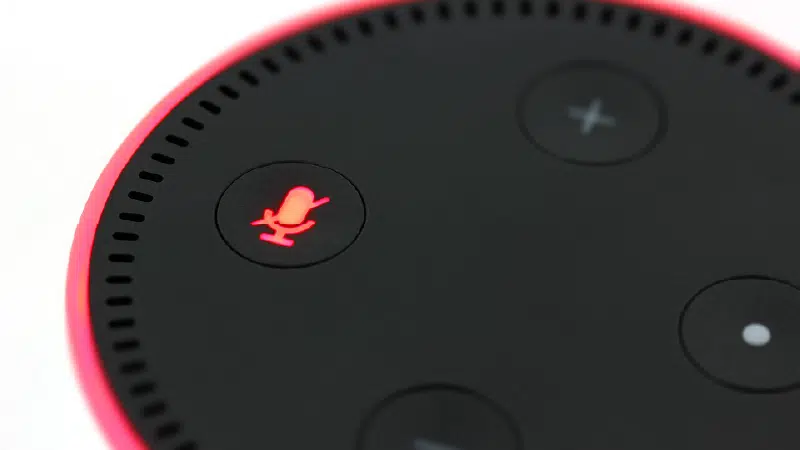By Nora Eckert
Wisconsin Watch
This article is made possible through Votebeat, a nonpartisan reporting project covering local election integrity and voting access.
Rhonda Staats had two choices during the November election: cast a ballot in person and potentially expose herself to COVID-19, or vote absentee and risk having her vote changed without her knowledge.
Staats is one of about 100,000 voters in the state who are blind or visually impaired. These voters must travel to their polling place to use an accessible voting machine — hoping one is available, operating and staff know how to use it — or have someone fill in their ballot for them.
“There is no way that a blind person may vote independently using vote by mail,” Staats said, adding that any form of voting in Wisconsin as a blind person “is a constant struggle.”
She voted by mail in the April and August elections with help from others, but the prospect of her vote not counting in November was “a terrifying thing.” The family members who could assist her in filling out an absentee ballot held different political views than she does, and she felt they would almost certainly change her vote. Staats finally found someone to safely transport her to an early voting location to use an accessible voting machine.
Issues with voting accessibility have persisted for years in Wisconsin, but the pandemic brought them to the forefront. While the disabled community benefited from some recent victories, including legislative changes and increased emphasis on absentee voting, barriers emerged during the pandemic, such as Republicans’ claims that a surge in the number of indefinitely confined voters — who are not required to submit photo ID — increased potential election fraud.
Accessibility issues persist
Stairs, no ramps, no disabled parking, no accessible voting machines: These were some of the problems Barbara Beckert discovered when she last audited polling places for the Wisconsin Elections Commission in 2019.
While all polling places are required to comply with the Americans With Disabilities Act standards, a majority do not. Nationally, at least 60% were not accessible in the 2016 election, according to a report by the U.S. Government Accountability Office.
Beckert, who is Disability Rights Wisconsin’s director of external advocacy for Milwaukee and southeast Wisconsin, said there have been improvements over the past few years that provided greater accessibility for voters with disabilities. Beckert was delighted when the Wisconsin Elections Commission decided to send absentee ballot request forms to 2.7 million registered voters this year. But she says there’s a long way to go.

A 2019 study by Rutgers University ranked Wisconsin’s disability gap — the turnout of people without disabilities compared to those with disabilities — 44th out of the 50 states and District of Columbia in the 2018 election. The same study found that the United States could see 2.35 million more voters if people with disabilities voted at the same rate as people without disabilities.
For Beckert, better educating election workers is key to solving many accessibility issues. Wisconsin law requires poll workers to attend at least one training every two years. Widespread fixes are hard to adopt in Wisconsin’s system, which is widely viewed as the most decentralized in the nation.
“That makes it especially difficult and challenging to address accessibility and voting rights issues. There’s not a central entity that has the authority to hold communities accountable,” Beckert said.
Other states offer online voting
The recent progress still left problems for visually impaired or blind voters, such as Staats, who had no private way to cast an absentee ballot by mail. At least a dozen states allow voters who are visually impaired to access ballots online, thanks in part to a concerted legal effort from advocates. In Wisconsin, this form of voting is reserved for military and overseas voters, who can access their ballots online and then must print them and mail them back.
Some municipalities in Wisconsin offer Braille absentee ballots for voters who are blind or visually impaired. After these ballots are returned to polling places, election workers must hand copy the ballot to one that can be processed by voting machines.
State Rep. David Steffen, R-Green Bay, who describes himself as visually impaired, opposes any digital absentee voting option for people who are blind, citing security concerns.
When asked why he didn’t favor extending the digital option available for overseas and military voters to people who are blind, Steffen said he wasn’t aware Wisconsin offered this option. Still, he opposes using it for the blind community.
“Being visually impaired, always brings with it additional effort and hurdles to be equal in the participation of life,” Steffen said. “Voting is just part of that.”
Steffen added he would like to improve accessibility for in-person voting and hopes Gov. Tony Evers will dedicate more funding to this area, as well as provide more general government resources for people with disabilities.

Danita Jackson understands life as a blind person is difficult. After losing her vision at 16, Jackson raised her son alone. Yet, the 51-year-old is adamant that some of the barriers she faces could be removed. Jackson said people with visual impairments deserve the option to receive a ballot that is compatible with screen reader technology, which converts text into speech or Braille.
“We do have a difficult life. But why should we just accept what people throw at us? It’s like we’re accepting poor treatment and being disenfranchised.” Jackson said. “Any time we can exercise our independence, we should do it.”
Debate over who is ‘indefinitely confined’
Republican legislators and President Donald Trump’s campaign spotlighted voting accommodations for the disabled community in 2020 when questioning the validity of ballots cast by more than 215,000 Wisconsin voters claiming to be indefinitely confined — a huge jump over previous elections.
For decades, Wisconsin law has allowed voters who are “indefinitely confined because of age, physical illness or infirmity or is disabled for an indefinite period” to claim this status, exempting them from photo ID requirements.
These voters are still cross checked in the statewide registration database, which references data from the state Division of Motor Vehicles and Social Security, confirming voters’ identities when they register. The system also compares information with the Department of Health Services’ Office of Vital Records and the Department of Corrections databases to ensure the voter is not deceased or a felon, which would disqualify their vote.
As the number of indefinitely confined voters surpassed 215,000 this year, a nearly four-fold increase from 2016, lawmakers started debating who should be covered: all people vulnerable to COVID-19 or only those who qualified as indefinitely confined before the pandemic? Some argued that including too many people would allow voters to abuse the provision.
“The fight intersects with long-standing debates in this country over who gets to be included in the category of disabled, and if you make that category too large, aren’t you encouraging fakery?” said Ellen Samuels, associate professor of English and Gender and Women’s Studies at the University of Wisconsin-Madison and founding member of the UW Disability Studies Initiative.
During the partial recount in Milwaukee County, Trump petitioner Stewart Karge requested all ballots cast by voters claiming to be indefinitely confined be set aside for further review. The Milwaukee Board of Canvassers didn’t honor the request. An analysis by the Milwaukee Journal Sentinel showed that more indefinitely confined voters cast ballots in counties Trump won than those Biden won.
Wisconsin Elections Commission members said they may assist clerks in reviewing the roll of indefinitely confined voters to see who still qualifies after the pandemic.
Some people have used social media as a tool to track movements of those who claim to be indefinitely confined, such as conservative radio host Dan O’Donnell, who pointed out that two electors for Joe Biden who said they were indefinitely confined posted on social media about traveling to the Capitol building.
Samuels said it’s a misconception that indefinitely confined voters can’t leave the house. She lives with Ehlers-Danlos Syndrome, a connective tissue condition that leads to unstable joints and frequent dislocations and sprains. Some days, Samuels can leave her house with her husband for a trip to their local co-op. Other times, she has to stay in bed all day. And she can never predict which days will be good or bad.

Rep. Ron Tusler, R-Harrison, who chaired a recent election hearing at which the issue of indefinitely confined voters was discussed, said it’s necessary to clarify who qualifies as indefinitely confined. He disagrees with those who say it’s impossible to do so.
“Those folks are wrong. There (are) ways to investigate these things. And we need to first have a body that can investigate it,” Tusler said.
He added that the definition should be “very generous” so as not to exclude people with a disability who could have difficulty voting by other means. His main goal is to clear out voters who may be abusing the law to circumvent ID requirements.
“The reason why we have a statute like that is so we can protect the vote of disabled individuals and make sure that everybody has the easiest way possible (to vote),” he said.
Uncertain future for accessibility legislation
In a year in which there is outsized focus on election security following a flurry of unsubstantiated fraud claims, representatives aren’t optimistic about the GOP-led Legislature’s willingness to ease voting access.
“If I’m being 100% honest I don’t have high hopes,” said Rep. Jimmy Anderson D-Fitchburg, who is paralyzed from the chest down and uses a wheelchair. “It doesn’t mean that we shouldn’t fight for these issues and to try to move the needle on it.”
Still, there have been victories in the past, such as a 2019 law eliminating the requirement for voters to say their name and address, making the process accessible for those who are deaf.
In future sessions, Anderson would like to focus on rolling back voter ID requirements put in place in the past decade, which he says disenfranchise many voters, including those with disabilities. He also sees voting accessibility from a more holistic perspective and wants to improve transportation, health care and access to home attendants to empower voters with disabilities.
On a national level, now is the time to demand improvements for voting accessibility, said Rebecca Cokley, the director of the Disability Justice Initiative at the Center for American Progress. She said the disabled community’s voice and platform are stronger than ever.
CripTheVote, a nonpartisan group with a prominent Twitter hashtag, elevated disability issues and allowed organizers and members of the community to engage with candidates. Additionally, a dozen Democratic presidential hopefuls released disability platforms this year — in previous years, only the nominee typically typically did so, Cokley said. In the Georgia senatorial runoffs, Democratic Sen.-elect Raphael Warnock incorporated sign language into his campaign efforts.
“I think there was a political momentum behind the engagement of the disability community that we’ve never seen before,” said Cokley, who served in President Barack Obama’s administration.

She wants activists and lawmakers to harness this momentum to call for more investment in voting technology that’s secure and accessible, two factors that she said are often pitted against each other. She would also like to see increased focus on improving accessibility in schools and churches, which are frequently used as polling places.
“The community is very adamant that we’re not going to be quiet, we’re not going to go back to being the cute little kids in wheelchairs that get trotted out for your telethon,” Cokley said. “What we demand is an equal seat at the table with everyone else. And the crux of that is voting.”
The nonprofit Wisconsin Watch (wisconsinwatch.org) collaborates with Wisconsin Public Radio, PBS Wisconsin, other news media and the University of Wisconsin-Madison School of Journalism and Mass Communication. All works created, published, posted or disseminated by Wisconsin Watch do not necessarily reflect the views or opinions of UW-Madison or any of its affiliates.
THE WISCONSIN CENTER FOR INVESTIGATIVE JOURNALISM (WWW.WISCONSINWATCH.ORG) COLLABORATES WITH OTHER NEWS MEDIA AND THE UW-MADISON SCHOOL OF JOURNALISM AND MASS COMMUNICATION. ALL WORKS CREATED, PUBLISHED, POSTED OR DISSEMINATED BY THE CENTER DO NOT NECESSARILY REFLECT THE VIEWS OR OPINIONS OF UW-MADISON OR ANY OF ITS AFFILIATES.









